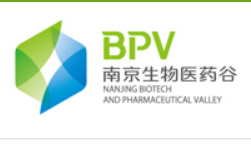β-芳基乙胺骨架是药物分子和天然产物中常见的结构 ,含有这种骨架的分子在缓解疼痛、治疗神经系统疾病和阿片类药物成瘾等方面具有引人瞩目的生理活性,这使得构建 β-芳基乙胺骨架也成了合成化学家关注的课题。β-芳基乙胺是有机合成中非常重要的中间体,下面小编汇总一下常见的合成方法。

文中蓝色字体链接可以点击查看详细内容
一、通过芳醛和硝基烷烃通过Henry反应构建α,β-不饱和硝基化合物,然后还原直接得到β-芳基乙胺。【硝基还原制备胺】

还原相关条件:LiAlH4【Journal of Organic Chemistry, 2006, vol. 71, # 25, p. 9440 – 9448;Synthetic Communications, 2019, vol. 49, # 22, p. 3218 – 3225】,锌粉【Synlett, 2014, 25, 2891 – 2894】,硼氢化钠【Tetrahedron, 2016, 72,6099 – 6106】,氢气钯碳【Tetrahedron Letters, 2012, 53, 7125 – 7127】。


反应实例
1、Reney Ni 催化加氢还原腈基示例

A mixture of the material (413 mg, 1.51 mmol), Raney nickel (413 mg) and ammonia (0.9 g) in methanol (20 mL) was hydrogenated under 340 KPa (50 psi) hydrogen overnight at room temperature. The mixture was filtered and the filtrate was concentrat- ed in vacuo. The residue was partitioned between ethyl acetate (50 mL) and water (40 mL) and the ethyl acetate extract was washed with brine (30 mL), dried (sodium sulfate) and concentrated in vacuo. The residue (400 mg) was purified by column chromatography on silica gel (100 g), eluting with 85: 15 ethyl acetate/methanol to yield the title compound as an oil (321 mg, 77% yield).
2 、Reney Ni-NH2-NH2 催化加氢还原腈基示例

The starting material (1.39 g, 3.1 mmol) was dissolved in ethanol and warmed to 55 °C before it was treated with Raney-nickel (1 mL slurry in water) followed by addition of hydrazine monohydrate (1.5 mL). The resulting mixture was allowed to stir at 55°C for 30 min or until the evolution of gas had stopped. The cooled reaction mixture was filtered through diatomaceous earth, rinsed with methanol and dichloro- methane. The filtrate was diluted with saturated sodium bicarbonate (50 ML) and extracted with dichloromethane (50 mL×3). The combined organic layers were dried with sodium sulfate and concentrated. Chromatography with NH4OH: MeOH: EtOAc (5:10:85) afforded the product (1.30 g, 93%yield).
3、 PtO2 催化加氢还原腈基示例

The material (3 g, 13 mmol) was dissolved in methanol (35 mL) and concentrated HCl (4.4mL). This solution was combined with 10 percent PtO2 (0.1 g) and hydrogenated under 50 psi for 2 hours. The methanol was removed under reduced pressure and the residue was diluted with 35 mL of ice cold water and 2.5 mL of 50 percent NaOH. The product was extracted with CH2Cl2, dried with MgSO4 and evaporated to an oil. This oil was purified by Prep 500 chromatography (10 percent MeOH/DCM) to yield 2.5 g of an oil. The salicylate was precipitated from an ether solution to give 3.3 g of product. m.p. 160°C.
4、 LAH 还原腈基示例

2-bromophenylacetonitrile (10.0 g, 51.0 mmol) were dissolved in ether (80 mL) and the solution was added dropwise to lithium aluminium hydride (5.81 g, 153 mol) in ether (230mL). The mixture was heated under reflux for three hours, while stirring, and, after cooling, 80 mL of potassium hydroxide solution (10 wt. percent) were slowly added dropwise, with vigorous stirring. After stirring overnight, the supernatant was decanted off, the residue was rinsed twice with 100 mL of ether each time, the combined organic phases were dried over anhydrous magnesium sulfate and filtered and the filtrate was concentrated on a rotary evaporator (500~10 mbar). 9.48 g of 2-(2-bromo-phenyl)-ethylamine (93% yield) were obtained in this manner.
5 、BH3 还原腈基示例

The material (1.0 g, 3.7 mmol) was dissolved in anhydrous THF (10 mL). BH3.THF (10mL, 1.0 M solution in THF, 10 mmol) is added. The reaction mixture is maintained under reflux for 3 hours before being cooled to room temperature. An aqueous solution (12 mL) trifluoroacetic acid (50 percent) was added dropwise. The mixture was heated under reflux for 1 hour. The solvents and the trifluoroacetic acid are eva- porated. The residue is redissolved in 20 ml of THF and evaporated to dryness. A crude solid product is obtained which contains essentially the desired product and is used directly in the following acetylation step.
6 、NaBH4 还原腈基示例

Sodium borohydride (2.2 g, 58.2 mmol) are suspended in dry THF (50 mL) and cooled to ca.0°C under moisture exclusion. The material (6.7 g, 23.1 mmol) are added and the mixture is subsequently cooled to -5°C to -10°C and added dropwise to (1.5 mL, 26.7 mmol) 95% sulfuric acid (vigorous foaming). The suspension is left to stand for two days at RT without further cooling. Under renewed cooling to ca. 0°C, 40 mL of 2 M sodium hydroxide solution is added dropwise. The aqueous phase is extracted with 30 mL of THF and thereafter the combined organic phases are washed twice, each with 30 mL of saturated NaCl solution, dried over sodium sulfate and the solution is removed under vacuum. The residue is chromatographically purified over silica gel with CHCl3/CH3OH/NH4OH (90/10/1). Yield: 3.9 g (57% yield).
近期马大为院士团队报道了铜催化下,利用草酰胺作为配体高效实现卤代芳烃与氰乙酸乙酯的高效偶联反应,实现了重要合成砌块芳基乙腈的便利合成。

【Angewandte Chemie International Edition, 2021, 60, 7082-7086 】
三、通过Knoevenagel缩合反应, Wittig反应, Horner-Wadsworth-Emmons反应,Heck反应,Suzuki–Miyaura反应,烯烃交叉复分解反应制备β-芳基丙烯酸衍生物,还原制备β-芳基丙酰胺,然后Hofmann重排得到β-芳基乙胺。


1881年,A.W Hofmann发现利用溴和钠(或氢氧化钾)处理乙酰胺可以得到N-溴代乙酰胺。接着碱性条件下脱质子,加热,N-溴代乙酰胺在无水条件下重排为甲基异氰酸酯,在水中则生成甲胺。
伯酰胺通过次卤化物处理(或氧化)经过异氰酸酯中间体生成少一个碳的伯胺的反应,被称为Hofmann重排反应或Hofmann降解反应。最早期的Hofmann重排是使用KOH水溶液和Br2来实施的。这个条件比较剧烈,后续有许多改进的方法,主要是通过氧化剂和碱来实现的。如Keillor等人1997年报道了用NBS做氧化剂,DBU做碱,甲醇中回流25分钟就得到了甲氧羰基保护的胺(JOC, 1997, 62, 7495-7496)。在四乙酸铅或高价碘(PIDA, PIFA, PhI(OH)OTs)氧化条件下,可以在酸性条件下进行Hofmann重排。酰胺α-碳如果有手性,重排后构型保持。α,β-不饱和酰胺或α-羟基酰胺进行Hofmann重排会生成醛酮。
反应机理

另外还可以对于一些富电子的芳环可以和丙烯腈通过Friedel-Crafts烷基化反应先生成芳基丙腈,然后水解为酰胺【腈水解制备酰胺】,再进行Hofmann重排得到β-芳基乙胺类化合物。








